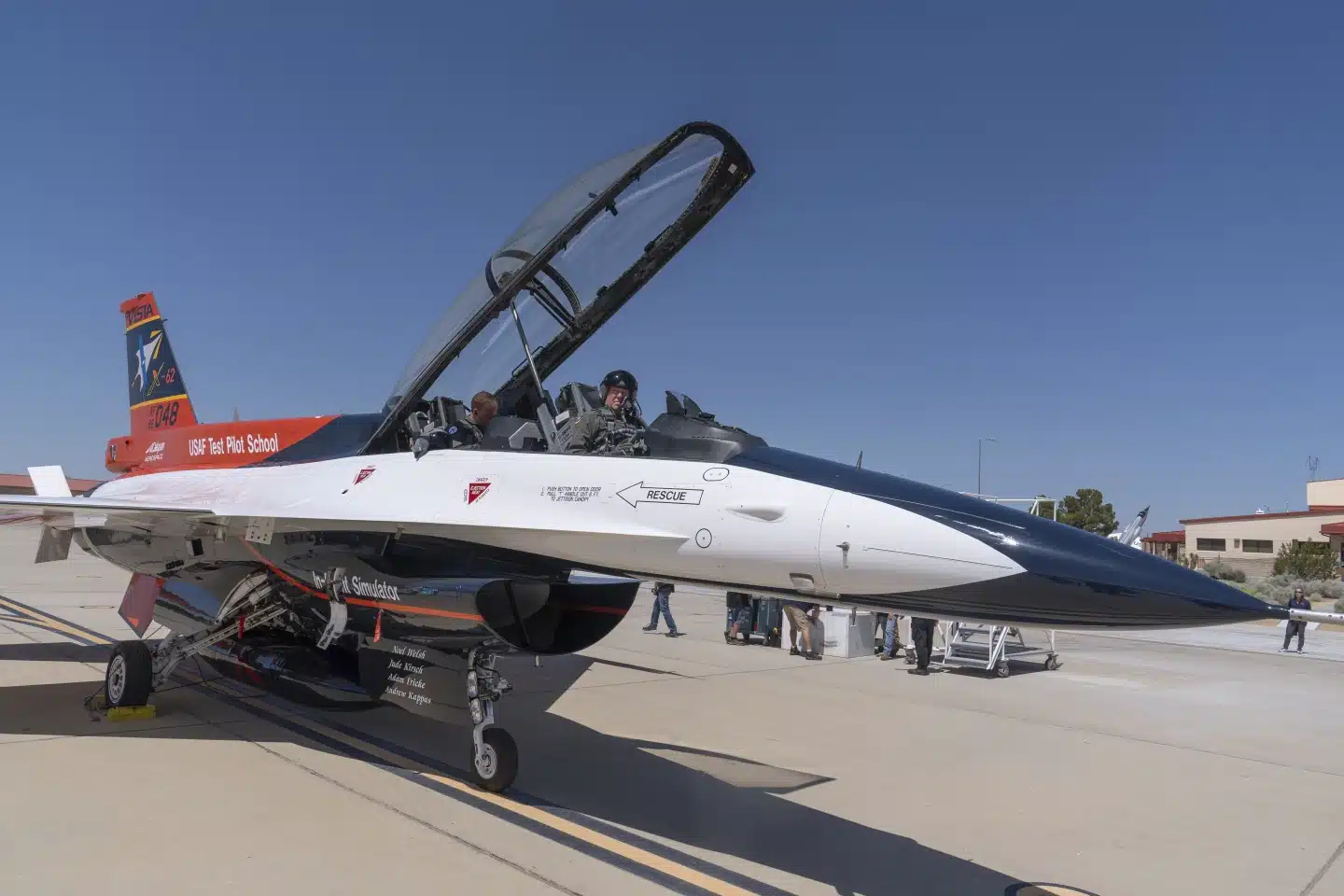Edwards Air Force Base, California:
With the midday sun shining, an experimental orange and white F-16 fighter jet took off with the thunderous roar that is a trademark of US airpower. However, the aerial fight that followed was unlike any other: this F-16 was commanded by artificial intelligence rather than a human pilot. Air Force Secretary Frank Kendall was riding in the front seat.
AI is one of the most significant improvements in military aviation since the advent of stealth in the early 1990s, and the Air Force has avidly pursued it. Even though the technology has yet to completely mature, the service intends to deploy an AI-enabled fleet of over 1,000 unmanned warplanes, the first of which will be operational by 2028.
An AI-Controlled Fighter Jet Took The Air Force Leader For A Historic Ride. What That Means For War
It was fitting that the dogfight took place at Edwards Air Force Base, a massive desert complex where Chuck Yeager broke the sound barrier, and the military has developed its most secret aeronautical technologies. Inside classified simulators and buildings with layers of surveillance protection, a new breed of test pilots is teaching AI bots to fly in combat. Kendall came here to witness AI fly in real time and express public confidence in its future role in air warfare.
“Not having it presents a security concern. “At this point, we have to have it,” Kendall told The Associated Press after landing. The Associated Press and NBC were allowed permission to see the secret flight on the condition that it be disclosed when it was completed due to operational security concerns.
Kendall was flown in lightning-fast maneuvers at almost 550 miles per hour by the AI-controlled F-16 Vista, which exerted five times the force of gravity on his body. It nearly collided with a second human-piloted F-16 as the two aircraft raced within 1,000 feet of one other, turning and looping to drive their opponent into vulnerable positions.
Kendall grinned as he climbed out of the cockpit at the end of the hour-long flight. He stated that he had seen enough throughout his flight to trust this still-learning AI with the decision to unleash weapons.
That proposition is met with strong hostility. Arms control specialists and humanitarian groups are profoundly afraid that AI will one day be able to drop bombs that kill people without human intervention, and they are calling for tighter controls on its usage.
“There are widespread and serious concerns about ceding life-and-death decisions to sensors and software,” the International Committee of the Red Cross has cautioned. Self-propelled weapons “are an immediate cause of concern and demand an urgent, international political response.”
The military’s transition to AI-powered aircraft is motivated by security, cost, and strategic capability. If the United States and China engage in battle, today’s Air Force fleet of pricey, manned fighters will be vulnerable due to advances in electronic warfare, space, and air defense systems. China’s air force is on track to outnumber the United States and is also developing a fleet of flying unmanned weapons.
Future war scenarios involve swarms of American unmanned aircraft offering an advance attack on enemy defenses, allowing the US to infiltrate airspace without putting pilot lives at risk. However, money plays a role in the transition. The Air Force is still dealing with production delays and cost overruns on the F-35 Joint Strike Fighter, expected to cost $1.7 trillion.
An AI-Controlled Fighter Jet Took The Air Force Leader For A Historic Ride. What That Means For War
Kendall believes that smaller, cheaper AI-controlled unmanned jets are the way forward.Vista’s military operators claim that no other country in the world has an AI jet like it, in which the software first learns from millions of data points in a simulator before testing its conclusions during actual flights. The real-world performance data is then fed into the simulator, where the AI processes it to learn further.
China possesses AI, but there is no evidence that it has developed a mechanism to conduct experiments outside a simulator. According to Vista’s test pilots, some lessons can only be taught in the air, similar to a junior officer learning tactics for the first time.“It’s all guesswork,” chief test pilot Bill Gray remarked until you fly. “And the longer it takes you to figure that out, the longer it takes before you have useful systems.”
Vista conducted its first AI-controlled battle in September 2023, with only roughly two dozen similar flights after that. However, the computers learn so swiftly with each battle that certain AI versions tested on Vista outperform human pilots in air-to-air combat.
An AI-Controlled Fighter Jet Took The Air Force Leader For A Historic Ride. What That Means For War
The pilots at this base know that they may be educating their successors or defining a future structure in which fewer of them are required.
However, they also state that they would only want to be in the air against an adversary with AI-controlled aircraft if the United States had its own fleet.
“We need to keep running. Kendall remarked, “And we have to run fast.”
SOURCE – (AP)










